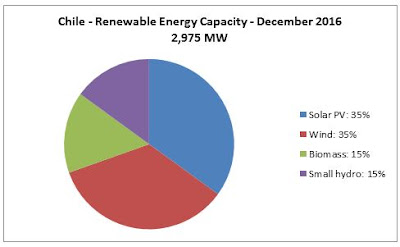Chilean Engineers Plumb California’s Path to Renewable Energy Future
 |
| The Parque Solar Santa Julia installation, in Chile's Valparaíso region. Credit: Hermann Balde |
The two environmental engineers – Carla Douglas and Hermann Balde – are nearing the end of a two-month stint at the Energy Commission as part of a fellowship funded by the Chilean government.
The two are the first international energy representatives that the Energy Commission’s renewables division has hosted.
“We've always compared ourselves to California,” said Douglas, who works for the Chilean Energy ministry office in Santiago, Chile. “We want to learn how community energy works so we can copy the model.”


Chile entered into an agreement with California in 2008 to promote renewable energy development.
Some of Chile’s biggest renewable energy challenges include opposition to new energy projects, lack of territorial planning and grid infrastructure, and the small penetration of renewable energy.
Renewable energy accounted for 14 percent of Chile’s energy in 2016, said Balde, who works for energy ministry office in Valparaiso, Chile.
 In 2016, 27 percent of electricity retail sales in California came from renewable sources, such as solar, wind, biomass, small hydro, and geothermal. The state is on track to meet its goal of deriving 33 percent of its electricity from renewable resources by 2020 and 50 percent by 2030.
In 2016, 27 percent of electricity retail sales in California came from renewable sources, such as solar, wind, biomass, small hydro, and geothermal. The state is on track to meet its goal of deriving 33 percent of its electricity from renewable resources by 2020 and 50 percent by 2030.Like California, Chile is setting ambitious goals and passing legislation in an effort to increase renewable energy. Chile recently passed a law requiring that 20 percent of its commercial energy come from renewable energy by 2025. In 2016, the Chilean government also crafted a plan called the 2050 Energy Policy. That policy sets a goal for 70 percent of the country’s renewable energy to come from solar and wind by 2050, said Balde.
Chile also wants to decouple energy consumption from its gross domestic product (GDP) growth.
“That’s the goal - to keep growing using the same or less energy per GDP unit,” Balde said. “It’s important because resources are finite, so you must try to use them efficiently in order to preserve them.”


